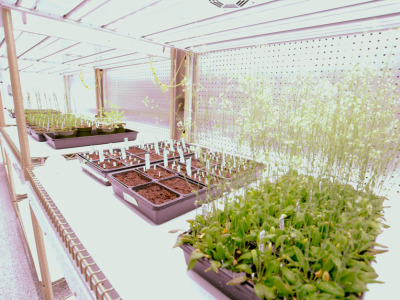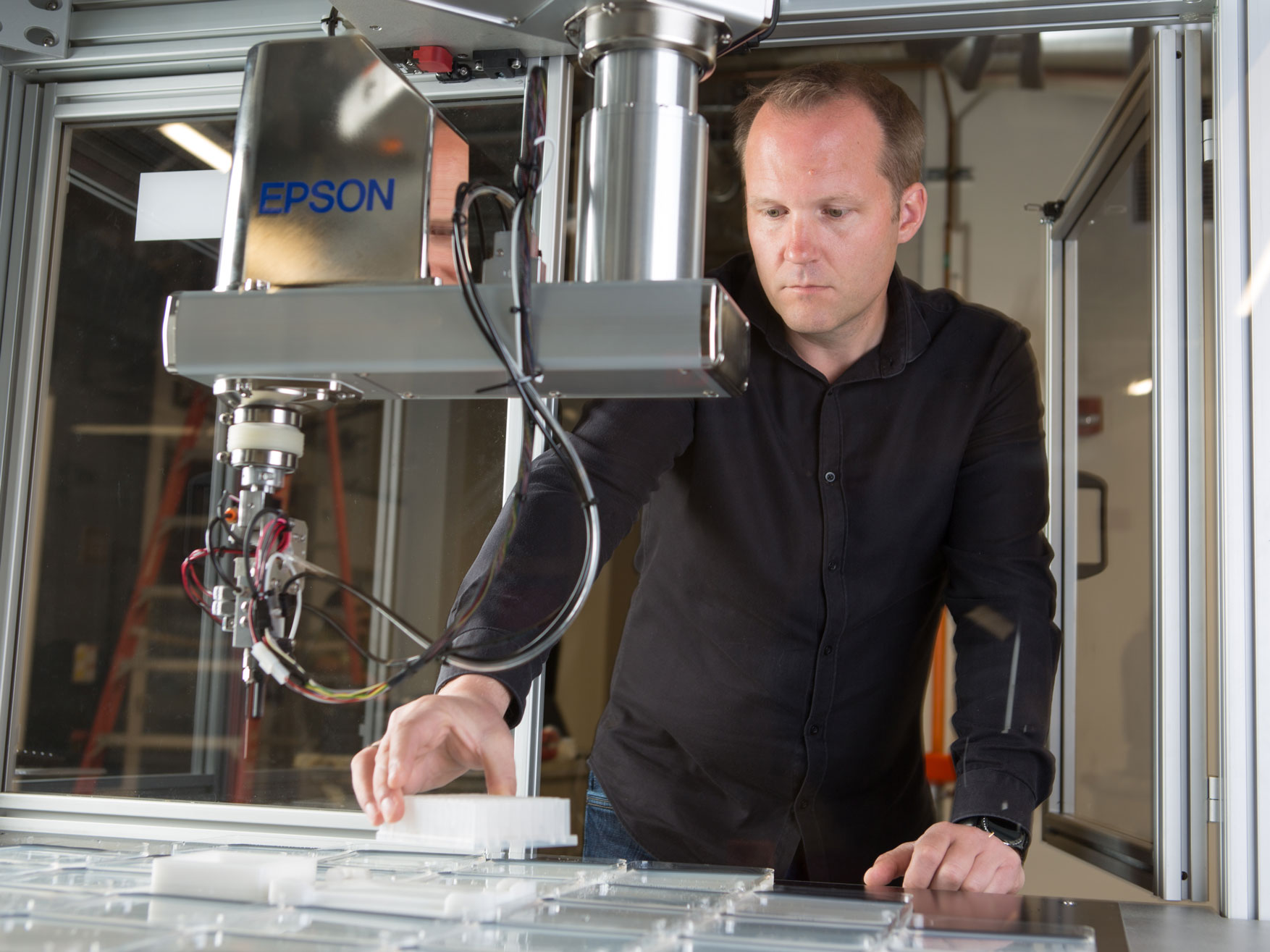Researchers at the Salk Institute in La Jolla, California, are conducting experiments on plant root systems to develop crops they say will be able to sequester more carbon. Professor Wolfgang Busch, who is co-director of Salk’s Harnessing Plants Initiative, spoke with Agri-Pulse about the potential of Salk Ideal Plants.
This interview has been edited and condensed for clarity and length.
Q: How did you decide to focus on roots and carbon? And what are the research questions behind the notion that plants could store more carbon?
A couple of years ago, the Salk Institute decided that it's really time to leverage advanced plant biology and genetics to try to mitigate the climate crisis. We were confident that plants could be a major solution. So we started thinking about what would be plant-related processes that would help hold onto carbon for longer in the soil. The ones that we picked, which were the most promising, are related to root traits. By putting more carbon into the root system, there will be more carbon deposited deeper in the soil. So that is the first trait: more root mass.
We are also working on two other characteristics that relate to how we can make sure that the additional carbon that we put in the root system is not being decomposed as quickly as now. You want to actually put that root mass deeper in the soil. The deeper the roots grow, the longer it takes for the carbon that the roots deposit there to decompose and go back into the atmosphere. The third one is to think about which carbon compounds make up the roots. We focus on suberin, which is naturally made in all roots and is used as a barrier in roots that prevents water loss and oxygen loss.
Q: How would these characteristics — deeper roots, more roots, more suberin — not be undermined by the annual cropping process?
The reason why we focus on crops is because of the scale of agriculture. If each individual plant could sequester a little bit more carbon, then it's all about acreage. Agriculture is this tremendous system that is in place that already adopts new enhanced seed varieties for different characteristics. We think by feeding root characteristics into that system, there can be an enormous effect just because of the area of the land that is used for a handful of different crop species. We don't think there is much reason to assume that any of the agricultural practices will interfere with that.
We think that regenerative ag practices, or more sustainable ag practices such as no-tilling or cover crops, would add to the benefit of the root systems we develop. If you just leave everything the same and just put more roots in at deeper layers and with more suberin, you’re basically going to have a net positive effect on the carbon storage. If reduced tilling practices and cover crops are adopted, that’s even better. But we don't think it’s reasonable to assume everything will change in agriculture. That's not going to happen. So, we need to work with the system that's there. We're talking to seed companies and breeders to make sure the changes that we make are compatible with the system.
Interested in more coverage and insights? Receive a free month of Agri-Pulse West

A grow room at the Salk Institute (Courtesy: Salk Institute)
Q: What other climate benefits would these traits offer?
Increased soil organic matter and carbon actually lead to increased water holding capacity, which is great when you think of the flooding that occurs, because the soil can take more on. In drought, because soil water holding capacity will increase, the ability to hold moisture in the soil for longer, combined with deeper roots, especially in rain-fed systems, is also a benefit. There are many reasons to assume that these types of crops will be more stress-resilient. Something else is nitrogen. A lot of money is spent on nitrogen fertilizer, and nitrogen fertilizer gets washed down the soil column. A lot of this loss contributes to contamination. With deeper roots, you can actually catch more of this nitrogen that is moving through the soil column, possibly having a positive benefit on the input costs and the environmental effects. Making the roots deeper and more resilient will not only have strong benefits in terms of climate crisis mitigation and carbon drawdown but also might be helpful for farmers for getting better yields with the increasing weather extremes that we are having and maybe even potentially lowering input costs.
Q: Where does the Salk Institute fit into the research continuum from public to private? And do you see seed companies as your competition or potential partners?
Our North Star in this project is we want to provide the world crop plant seeds that will be able to make an impact. It's not so much thinking about competition, it's about what is the best pathway to enable farmers to grow carbon-sequestering crops? That is different for each crop species. At the forefront of our minds is always, whatever we do, with whom we partner, we need to be assured that the outcome of this partnership will lead to a lot of acreage where farmers can potentially plant these seeds. Right now, we are talking to major seed companies, I think they all know what we're doing. In the next years, we hope to form specific partnerships.
Q: Where does the funding for Salk Ideal Plants come from?
When we decided we really want and need to work on the aspect of carbon sequestration in plants, there was no funding scheme available from federal funding sources. We were very fortunate that we could acquire a lot of philanthropic support, first from the TED Audacious Project, the Hess Corporation and finally from the Bezos Earth Fund, totaling more than $80 million.
My sense is that federal funding is now more and more kicking in, which is a great thing, and so we will, of course, then compete for those grants as well.
Q: Do you anticipate that what ultimately becomes commercial seeds for farmers would be developed with genetic engineering, gene editing, traditional breeding or a combination of these?
As a geneticist, to me, these are just technologies. To us, this overarching thought is how can we get to scale, how can we enable farmers to do something like this? It's different for every crop and every region. It becomes a question that will be only answered with the partners along the way, like talking to a seed company or to small breeders. They'll tell us, “look, this is feasible and we are confident that we can actually provide seeds to farmers at that time scale with that technology.” For the US market, I think gene editing seems to be a very reasonable way to go. But then for other markets, like the European Union, it's a whole different thing. Whether it's breeding or gene editing or genetic engineering will be dependent on how promising these will be to achieve our goals of having these plants actually make a global impact.
Q: At this stage of the development, what would you like farmers to know about Salk Ideal Plants?
Farmers are the people who, in the end, will make a major contribution to solving the really big problems in this world: how can we provide more food, feed and fiber for a growing world population in the face of changing climate? I think it would be wonderful if they could start thinking about this and be open when the time comes. They might be able to try out a new seed variety, a Salk Ideal Plant variety, that will not only produce yield but also provide this additional service of making their soils better, which is hopefully great for them, but also at the same time, draw down some of that CO2 that's causing all these problems.
For more news go to www.Agri-Pulse.com.

